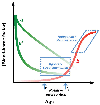Blood-Based Therapies to Combat Aging
- PMID: 30196300
- PMCID: PMC6335155
- DOI: 10.1159/000492573
Blood-Based Therapies to Combat Aging
Abstract
Dysfunction associated with the aging process positions aging as a leading culprit for development of devastating diseases and mounting health-care costs. Many age-associated conditions for which aging increases risk are neurological disorders with no effective treatments, including Alzhei-mer's disease. As the proportion of aged individuals continues to rise in the coming decades, aging-related costs are expected to increase dramatically. Diverse approaches have emerged to meet the clinical need to treat aging and its associated conditions, including those aimed at increasing longevity, slowing the aging process itself, and improving healthspan. An emerging approach takes advantage of molecules circulating in the blood to limit or reverse aspects of aging in various organs throughout the body. Efforts are underway to translate these findings into novel therapeutics that harness the activity of youth-associated molecules present within blood. Here, we discuss the current state of blood-based approaches in this arena. Despite the apparent ease with which blood products might conceivably be applied as treatment paradigms, we propose that challenges nonetheless exist, which may be overcome with mechanistic studies that identify common pathways for targeted therapeutics.
Keywords: Aging; Alzheimer’s disease; GDF11; Neurodegenerative disease; Osteocalcin; Parabiosis; TIMP2; Young blood; Young plasma.
© 2018 S. Karger AG, Basel.
Conflict of interest statement
Financial Conflicts of Interest
J.M.C. holds equity in the form of stock in Alkahest, Inc., to whom the use of plasma (PCT/US2014/068897) and TIMP2 (PCT/US2016/036032) in aging and disease has been licensed.
Figures

References
-
- de Magalhaes JP, Stevens M, Thornton D: The Business of Anti-Aging Science. Trends Biotechnol 2017;35:1062–1073. - PubMed
-
- Wei M, Brandhorst S, Shelehchi M, Mirzaei H, Cheng CW, Budniak J, Groshen S, Mack WJ, Guen E, Di Biase S, Cohen P, Morgan TE, Dorff T, Hong K, Michalsen A, Laviano A, Longo VD: Fasting-mimicking diet and markers/risk factors for aging, diabetes, cancer, and cardiovascular disease. Sci Transl Med 2017;9 - PMC - PubMed
Publication types
MeSH terms
Grants and funding
LinkOut - more resources
Full Text Sources
Other Literature Sources
Medical
Research Materials
Miscellaneous

